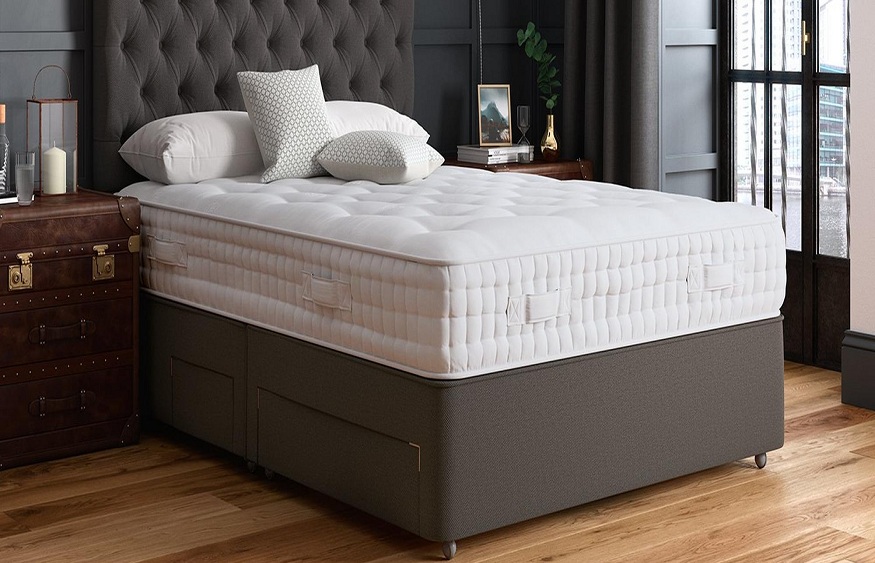A good night’s sleep is crucial for health and well-being, but it can be elusive for those who struggle with overheating during the night. The mattress you choose plays a significant role in this equation.
Mattresses that regulate temperature effectively not only enhance sleep quality but also contribute to overall comfort. As we dive deeper into the world of sleep technology, understanding how to select a mattress that keeps you cool becomes essential.
Understanding the Importance of Mattress Materials
The journey to a cooler sleep is largely dependent on the materials used in your mattress. Traditional memory foam, while celebrated for its conforming properties and support, often leads to heat retention, making it a less ideal choice for those who sleep hot. The inherent structure of memory foam, dense and closed-cell, traps heat close to the body, which can disrupt sleep by causing discomfort.
In response to this challenge, mattress manufacturers have innovated with materials designed to enhance breathability and heat dissipation. Gel-infused memory foam is one such advancement. These mattresses incorporate gel beads or gel swirls within the foam, which work to absorb and disperse body heat more effectively than traditional memory foam. This gel technology not only cools the sleeping surface but also maintains its supportive characteristics.
Another significant material in the realm of cool sleeping is latex. Natural latex, derived from the sap of rubber trees, offers a more breathable alternative to memory foam. Its open-cell structure allows for greater air circulation, preventing heat buildup. Latex is also inherently cooler to the touch, which contributes to its temperature-regulating properties.
Advanced open-cell foams represent a further evolution in mattress materials. These foams are engineered with larger cell structures compared to traditional memory foam, creating pathways for air to flow more freely. This improved airflow significantly reduces heat retention, ensuring a cooler sleep experience.
The Innovation of Hybrid Mattresses
The advent of hybrid mattresses marks a significant milestone in mattress technology. Combining the traditional support of innerspring coils with the comfort of foam layers, these mattresses offer an optimal balance of airflow and cushioning. The coils facilitate air circulation, preventing the heat accumulation typical in all-foam mattresses. An exemplar of this innovation is “Simba’s new 2024 hybrid line,” which showcases cutting-edge design for enhanced breathability and temperature control.
Cooling Technologies in Mattress Covers
Mattress covers play a crucial role in temperature regulation. Recent innovations include covers made with phase-change materials (PCMs) and those infused with cooling agents like copper or graphite. These materials function by absorbing excess body heat and releasing it when body temperature drops, maintaining a comfortable sleeping environment. Such covers can transform even a standard mattress into a cooler, more sleep-friendly surface.
Size and Firmness Considerations
Size and firmness of a mattress are also key factors in temperature regulation. A firmer mattress often means less sinking and more surface area exposure, enhancing air circulation around the body. In terms of size, larger mattresses offer more space, potentially leading to better airflow and reduced heat retention. This is particularly relevant for couples, where body heat can accumulate more rapidly.
The Role of Bed Bases in Temperature Control
A suitable bed base is vital for maximizing the temperature-regulating properties of a mattress. Bed bases like slatted frames or box springs encourage air circulation beneath the mattress, aiding in heat dissipation. In contrast, solid platform bases might restrict airflow, potentially leading to warmer sleeping conditions.
Additional Tips for a Cooler Sleep Environment
Beyond the mattress itself, several other factors contribute to a cooler sleep environment. Room temperature is paramount; maintaining a cooler room temperature can greatly aid in sleep comfort. Bedding materials also play a role; opting for breathable fabrics like cotton or bamboo in sheets and sleepwear can help regulate body temperature. Additionally, the use of fans or air conditioning can assist in maintaining a cool, comfortable sleeping space.
Conclusion: A Holistic Approach to Cool Sleep
Selecting a mattress that aids in temperature regulation is a critical step towards achieving cool, restful sleep. By considering the right combination of materials, design, and complementary environmental factors, you can create an ideal sleep setting that counters overheating effectively. Remember, the ultimate aim is to achieve restful, uninterrupted sleep, and a temperature-regulating mattress is a key component in this pursuit





